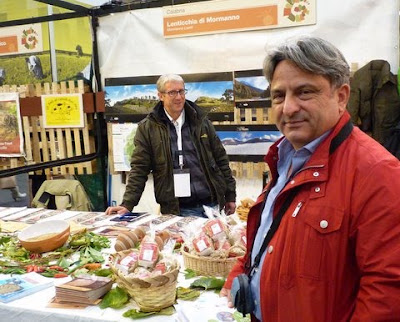As in the past, this year also saw Salone Del Gusto showcasing Slow Food’s most important project in support of small-scale producers: the Presidia. The Slow Food Foundation for Biodiversity strengthens communities of small-scale producers, protects traditional foods and promotes geographic areas, creating new economic models and putting them into practice around the world. Its main projects are the Presidia, the Earth Markets and the Ark of Taste. Scattered all over the 3 Pavillion Marketplace, divided by geographic area, over 200 stands and identified by the color orange were displayed cheeses, cured meats, breads, sweets, vegetables, fruits, grains and honeys protected by Slow Food. The Slow Food Presidia are concrete examples of a model for agriculture based on quality, the safeguarding of traditional knowledge and sustainability. From the Alps to the Andes, from the Sahara desert to the Tibetan highlands, the Presidia bring producers together and give them the support they need to promote their product and access new markets.
Here are some that caught my eye.
 |
| The Mormanno Lentil stall |
 |
| It reminded me of Masoor,. |
 |
| Close look! |
 |
Orbassano Red Celery
The story of red celery began with the introduction of a purple celery from France in the 17th century which gradually acclimatized to the environment in market gardens near Turin. With its distinctive red base and almond flavour, it was a common product at vegetable markets in Turin then abandoned and risked disappearing due to its demanding cultivation requirements and
lower profitability compared to other varieties. Now only a few growers in the area between Stupinigi and Orbassano continue to produce it, and sell at the farm or local markets. |
 |
| Nnow protected by a Slow Food Presidium: the Caprauna turnip, which takes its name from a mountain village at an altitude of about 900 meters in the Valle Tanaro, on the border between Piedmont and Liguria. The proximity of the sea and the high altitude ensure optimal growth, a sweet, delicate flavour and an unusual yellowish white in colour. |
 |
Hunchback Cardoon - Cultivated in the sandy soil along the Belbo River, these cardoons are trained into a unique “hunchback” shape. Once the plants are tall and vigorous, the cardaroli, or cardoon growers, bend the plants over and cover them with soil. As they seek to find sunlight, the plants swell and curve and the stems lose all their chlorophyll, becoming white and tender. The Nizza Monferrato hunchback cardoon is the only cardoon that can be eaten raw, and is a classic accompaniment to one of Piedmont’s greatest
dishes, bagna cauda, a warm sauce of olive oil, garlic and anchovies. |
 |
| In 1277 the herders of Castelmagno paid rent for their pastures to the Marquis of Saluzzo in cheese. Today, the Castelmagno found on the market is made primarily in dairies, but there are still several farmers who produce it in the mountains according to traditional methods. The complex and ancient technique calls for the curd to be broken into large walnut-sized lumps which are then tied up in a cloth and left to hang before being cut again into cubes, crumbled into fine pieces, mixed with coarse salt and put into molds. |









1 comment:
The concept of "slow food" has always interested me. The pictures are captivating.
Post a Comment